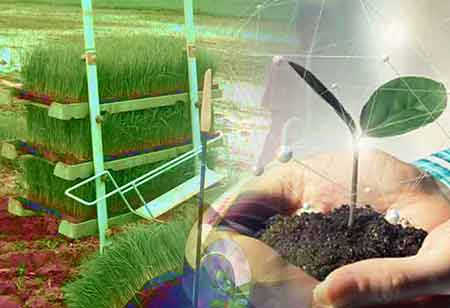Thank you for Subscribing to Agri Business Review Weekly Brief
Overview of Various Techniques in Vertical Farming

By
Agri Business Review | Wednesday, July 13, 2022
Stay ahead of the industry with exclusive feature stories on the top companies, expert insights and the latest news delivered straight to your inbox. Subscribe today.
Vertical farming protects against pests and diseases since crops are grown under controlled conditions.
FREMONT, CA: Architects formulate plans to transform food production in their unique manner. They hope to reduce reliance on conventional land-based farms and maximize the use of space in our crowded built environment. Put another way, growing crops in structures rather than in wide-open spaces with tractors. This activity, often known as "indoor" or "vertical farming," is alive and well. As with earlier forms of urban agriculture, rooftop gardens would be woefully inadequate to feed the population; thus, other methods and structures are employed. Vertical farming can sustain itself long-term because of its quality of protection against pests and various other diseases as the crops are grown in a safe environment with constant monitoring.
Hydroponics
Growing plants in nutrient-rich water rather than soil are one of the earliest and most popular types of vertical farming. The simplest hydroponic technique, the floating raft system, suspends the plants on a soilless raft resembling a polystyrene sheet and allows the roots to dangle to absorb the oxygen-aerated fluid. The nutrient film technique, famous for growing lettuce, is another widely used approach. Here, the plants are contained in an inclined tube, usually made of plastic pipe that receives a stream of the nutrient-dissolved solution. It flows beyond the root mat of the plants and can then be continuously re-circulated.
Aeroponics
In aeroponics, a pump sprays a thin mist of an atomized nutritional solution straight onto the roots, where the dangling roots take it all in. Although plants can develop considerably more quickly using aeroponics than hydroponics, the process is more expensive because more solution is needed.
Aquaponics
An aquaponic system, like hydroponic systems, suspends a soil-free plant bed over a body of water that includes the nutrients required for plant growth. However, there is a population of fish (usually herbivores) in the body of water, and their waste serves as fertilizer for the plants. In turn, the plant's aid in water purification makes it acceptable for fish. Aquaponics requires more attention than hydroponics or aeroponics because a balance is struck to assure the system of both life forms; however, filtration and aeration devices can help manage these problems. Additionally, far fewer varieties of plants may be grown because the nutrients required for both plants and fish must be compatible.





